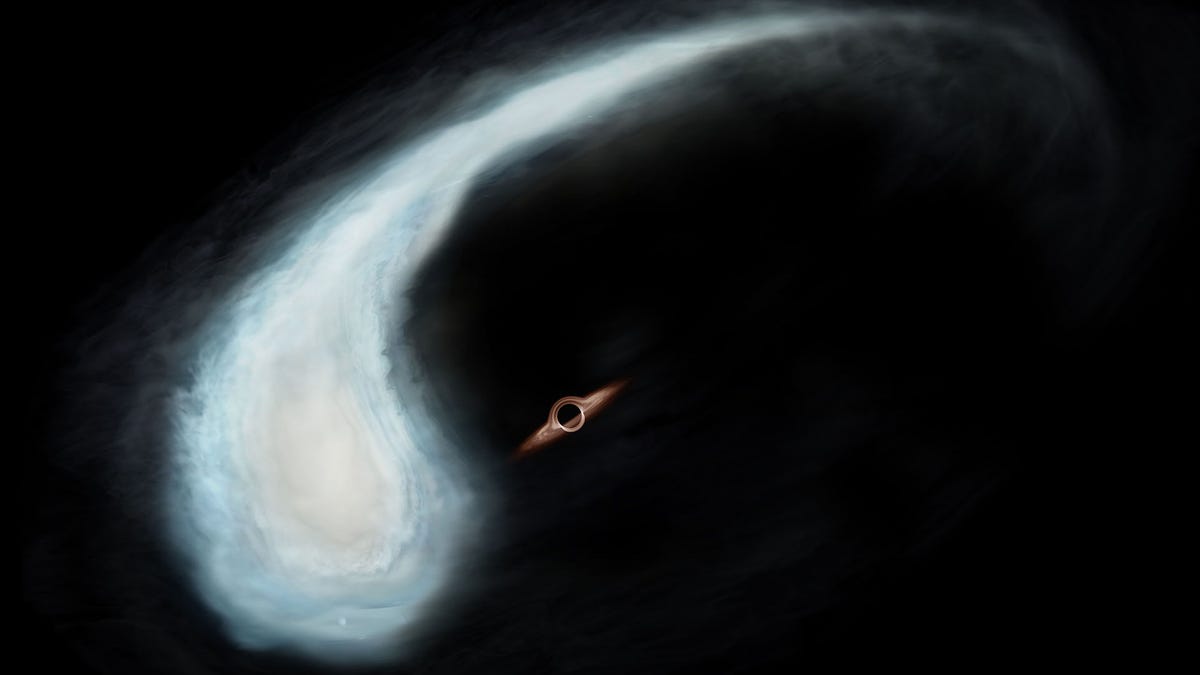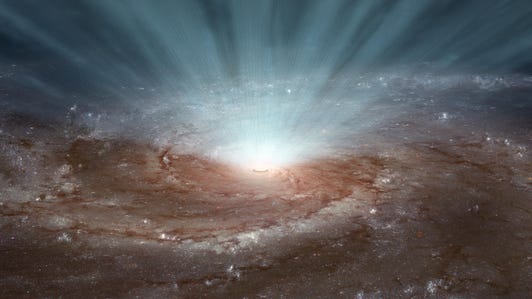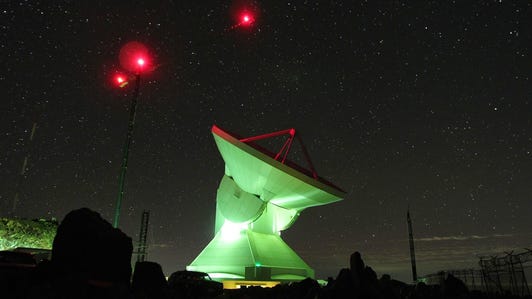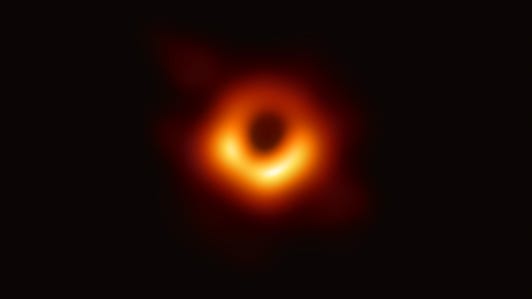
The Tadpole cloud may get its shape from a black hole, shown here in an artist’s illustration.
Keio University
Around 27,000 light-years away in the Sagittarius constellation, there’s a cloud of gas shaped like a tadpole. For now, the cause of its distinctive shape is a mystery, but a team of astronomers has a good guess as to what’s going on with its weirdness. It may involve a sneaky black hole.
Japanese researcher Miyuki Kaneko at Keio University led the team that identified the unusual cloud, nicknamed it the “Tadpole” and set about investigating its secrets. They announced the molecular cloud’s discovery in a paper published in The Astrophysical Journal last month. A molecular cloud is a collection of gas and dust. They’re often described as stellar nurseries when they’re hosting active star formation.
“The curved ‘Tadpole’ shape of the molecular gas cloud strongly suggests that it is being stretched as it orbits around a massive compact object,” the National Astronomical Observatory of Japan said in a statement on Thursday. “The only problem is, at the center of the Tadpole’s orbit, there are no bright objects which could be massive enough to gravitationally hold the Tadpole.” So what’s lurking in the dark there? This is where a black hole could come in.
What is a black hole? The universe’s dark, mysterious monsters






+18 more
See all photos
Black holes are elusive. We can’t just stare out into space and point out black holes like we do stars and galaxies. We find them by noticing how they interact with celestial objects around them. The shape and motion of the Tadpole cloud suggests there’s a black hole stretching it out.
The researchers found the cloud in data from the James Clerk Maxwell Telescope in Hawaii and the Nobeyama 45-m Radio Telescope in Japan. To get a better idea of what’s going on with the mysterious cloud, they plan to call on the Atacama Large Millimeter/submillimeter Array (ALMA) telescope in Chile to take a closer look. They hope to turn up more definitive evidence of the potential black hole.
Think of this like a cosmic detective story where astronomers are following clues. The crime? A cloud of gas bent into a tadpole. The suspect? A black hole. Now they just have to keep building the case and follow the evidence wherever it leads.
